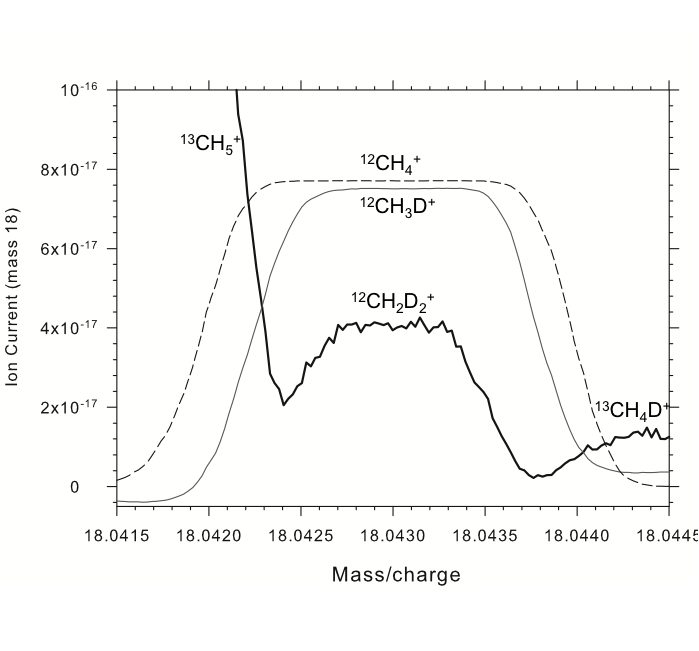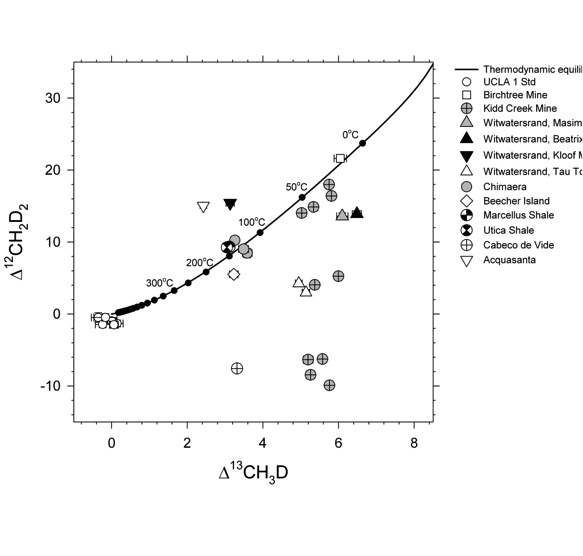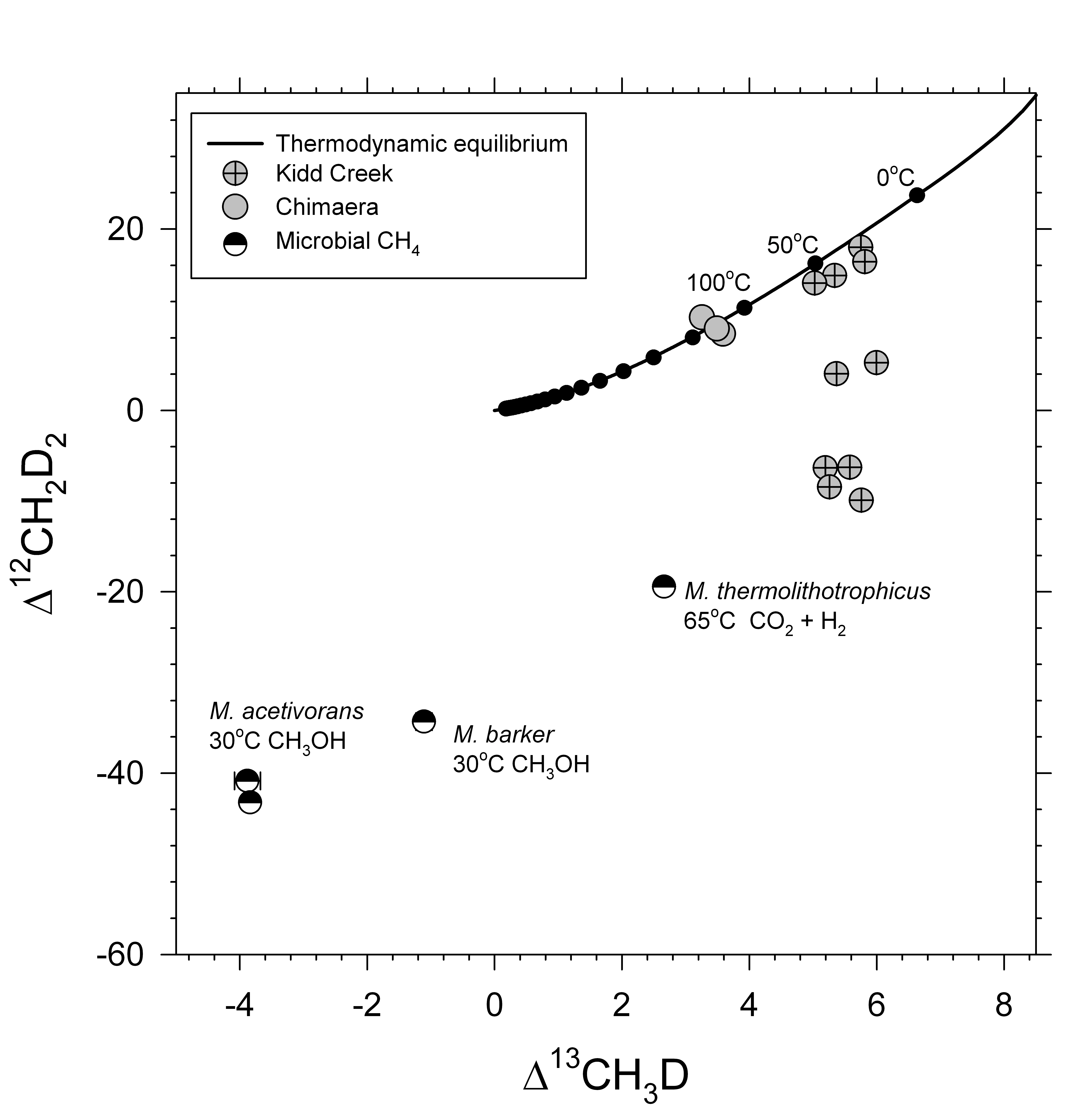CH4 chemistry using rare isotopologues
Overview and Methods
We are using a novel method for tracing the origins of methane gases across the globe. In this method, two rare, multiply substituted isotopologues (isotopic species) of CH4 are used to distinguish formation mechanisms of methane gas and subsequent mixing and/or bond rupture.
We use a vacuum extraction line with two GC columns in series to purify methane for analysis:

With the Panorama high-mass-resolution gas-source mass spectrometer we can separate the two rare isotopologues CH2D2 and 13CH3D. The mass spectrometer peak shape for the resolved CH2D2 beam is shown below:
What we learn
Through various collaborations we are acquiring samples from around the world. In our first applications (e.g., Young et al. 2017, GCA) we examined gases from deep mines from South Africa and Canada, gases from ultramafic complexes from various localities, and from some well-known natural gas fields. Localities sampled as part of our first round of studies are shown here:
These novel data show some surprises with regard to the formation mechanisms of natural methane gas. For example, many gases exhibit extreme depletions in CH2D2 relative to thermodynamic equilibrium (see Figure below, left).
These depletions are so great that they must be due to quantum tunneling effects that favor H over D during assembly of the methane. The existence of the large deficits in multiply deuterated methane allows us to identify gases that are mixtures of several sources and to identify gases formed out of thermodynamic equilibrium. In many cases, the temperatures of formation and the mixed sources would not have been identified otherwise. Microbial production of methane produces similar depletions in the doubly deuterated methane but also shows marked deficits in 13CH3D (see Figure below, right)
These isotpologue signatures are proving to be useful tracers for methane gas in general, and for mixtures of distinct gases in particular.






